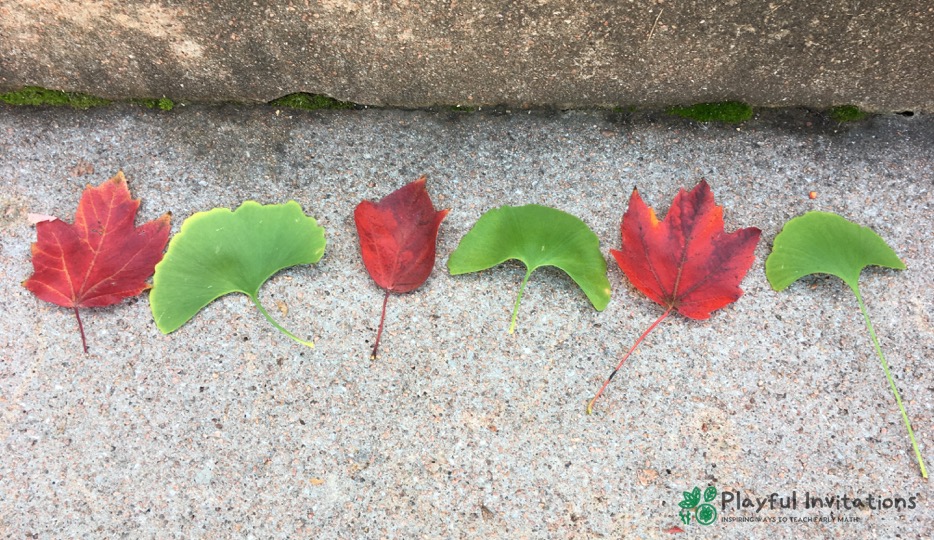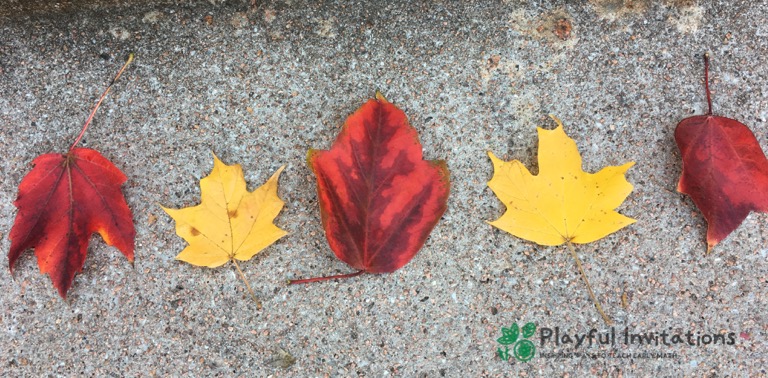“Patterns are sequences governed by a rule they exist both in the world and in mathematics”
-Erikson Institute’s Early Math Collaborative
Every morning on our way to school we drive by a car dealership with brightly colored balloons attached to shiny new cars. One day my daughter exclaimed, “Look it’s a pattern! Red, white, red, white!”
Later that afternoon I asked her if ‘square, circle, square, circle,’ could be a pattern?
“I think so,” she said.
“What about this?” I said as I clapped, stomped, clapped, stomped.
“No! No!” she said.
My daughter had a sense of what makes a pattern, but did not know patterns can be made of different things (objects and sounds). Patterns are also found throughout our day-to-day lives. A pattern is simply, anything that repeats in a predictable way.
“In addition to being a common topic for young children, patterns are considered a central idea in mathematics. Identifying, extending and describing predictable sequences in objects or numbers are core to mathematical thinking.” -Rittle-Johnson, 2015
This activity is based on the National Research Council’s (2009) recommendation that preschool children learn abab, abcabc, and aabbaabb patterns. This is only one small part of learning about patterns, but easy to do with materials found in nature.
Playful Invitation:
1. Prepare: Gather an assortment of colorful fall leaves.
Observe the child throughout the interaction. Use the Invitation to Play Documentation Tool to collect data.
2. Invite: Create a pattern ahead of time using two materials. (start with abab- Red leaf, Green leaf, Red leaf, Green leaf) Show the child the pattern then ask: How could you make a pattern with these things?
3. Play: Watch as they create a pattern.
Ask open-ended questions: Tell me about your pattern? OR Read this pattern to me?
Model thinking: A pattern is something that repeats or happens over and over again.
So, Yes! This is a pattern! Look...Red, yellow, and then red, yellow again!
*If the child struggles to make their own pattern, guide the child to copy a pattern using the same materials OR start a pattern and work on extending.
Next, ask open-ended questions: Show me a pattern using three things? OR Show me a different pattern using the leaves?
Extend their thinking about other types of patterns (abab, abcabc and aabbaabb) For example: I saw you can make a pattern with two things, but did you know you can also make patterns using three things? Watch...red leaf, green leaf, yellow leaf, red leaf, green leaf, yellow leaf.
OR
Watch this, sometimes you can use the same material two times. Red leaf, red leaf, green leaf, green leaf, red leaf, red leaf, green leaf, green leaf. See? The pattern repeats and we can figure out what happens next!
4. Reflect and assess: Did the child create patterns? abab, abcabc and/or aabbaabb or something else? Did they copy or extend a pattern you made? How did they explain their pattern? What will you work on next?
Ready: The child identifies patterns in their life and surroundings. The child can copy a simple pattern (Can you make the same pattern I made?), and extends patterns that are already started. (What would come next?)
Ready to move on: The child creates simple patterns on their own without a model.
Extend: Encourage the child to continue creating new patterns using the same materials. How many different ways can you make a pattern using these leaves? Allow the child to be creative with patterns (not just abab, abcabc, and aabbaabb). Practice patterns that grow- use sounds or body (soft, medium, and loud! Soft, medium, loud!). Talk about patterns in your daily life (seasons: Fall, Winter, Spring, Summer).
MATH LANGUAGE
Pattern- A regularity in the world or created by a person. Patterns repeat in a predictable manner.
Resources
Rittle-Johnson, (2015)*
NRC (2009)*
*full citations can be found on the Research Page









